Suspended Triad Fills For Slow Blues
In this lesson we combine the 12/8 left hand pattern with simple right hand melodic ideas and fills. We start with a simple melodic exercise, then a space filler exercise, and finally we combine both the melody and the space filler.
Completing the drills outlined in this lesson will help you to develop a sense of hand independence and it will set the stage for the next module where we introduce more complex melodic and harmonic ideas.
Simple Right Hand Melody
The chord tones root, 3, 5, and 7 play an important role when creating melodies and when improvising over the 12 bar blues. We introduce a simple right hand melody that approaches the third of each chord from a half step below and then jumps up to the root of the chord.

This drill will help you to visualise the 3rd of each chord and how to approach it chromatically. In the upcoming lessons we introduce a similar drill which targets the 7th of each chord.
Suspended Triad Fills
We can build a triad a 4th up from each chord to create a suspended triad fill. This works beautifully over all 3 chords in the 12 bar blues and it is a useful device to smoothen the transitions between the chords.
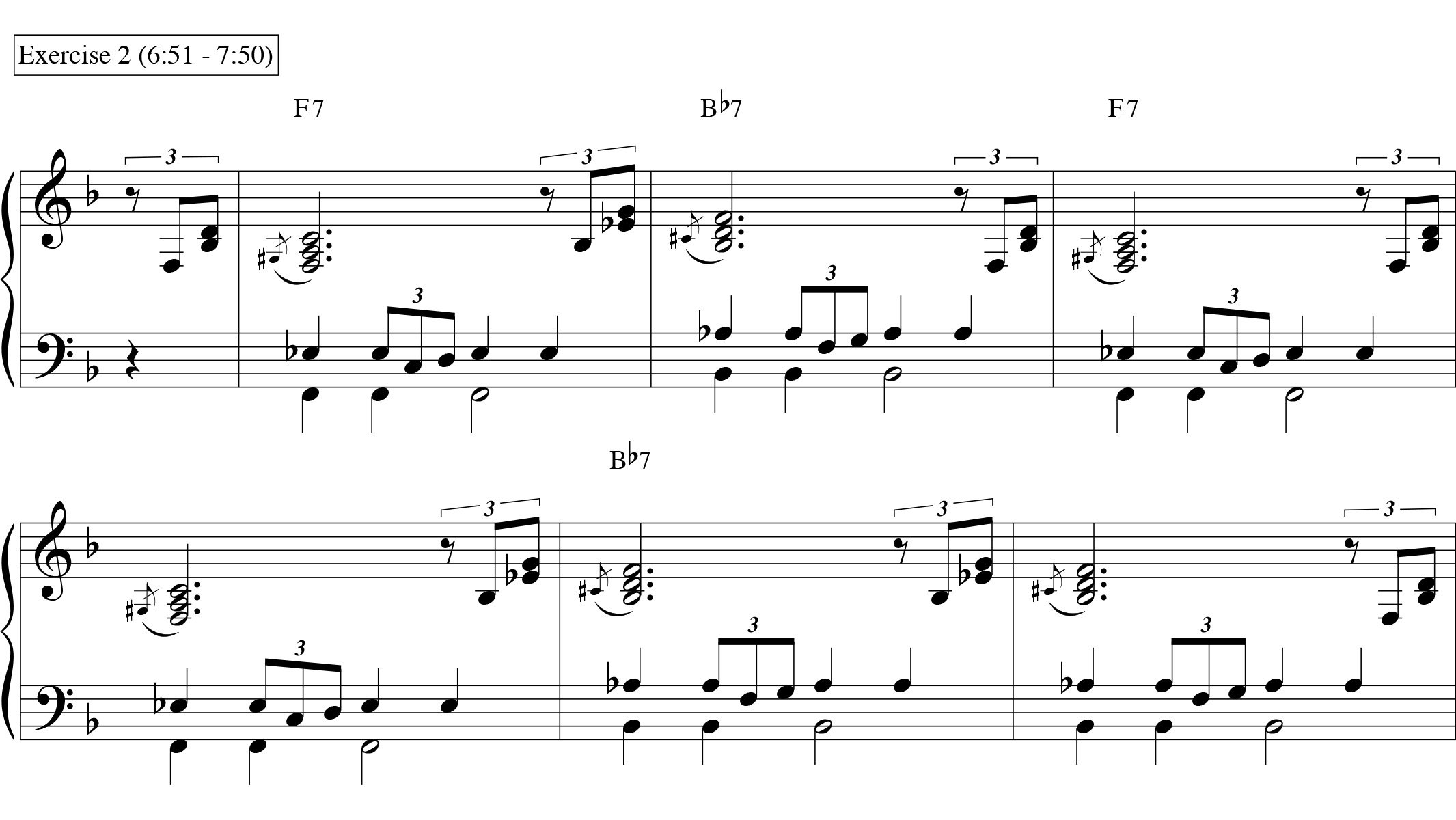
We explore the underlying theory on suspended chords and how they can be used to bridge the gap between the main harmonies of the 12-bar blues form.
Combining Simple Melodies & Space Fillers
Finally we merge the simple melody with the suspended triad fill to create interesting right hand harmonies which complement the left hand bass line.
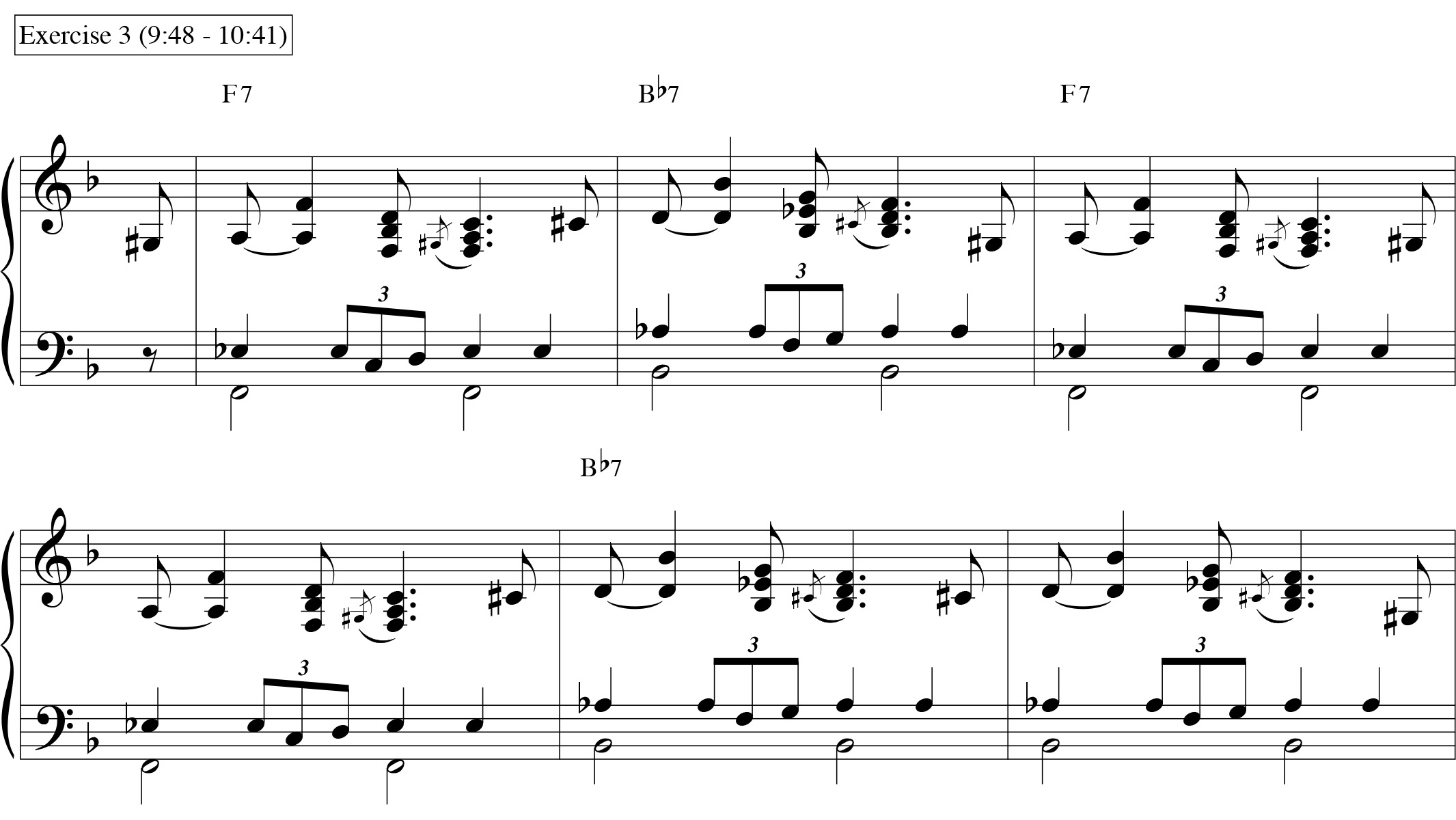
In the 3rd module of this course we have a series of lessons dedicated to space fillers. We cover a selection of devices that can be used to tastefully fill space and complement our right hand melody lines.
Lesson Downloads
-
Melody & Triad Fills: 3 Exercises File Type: pdf
Practice Tips
-
Remember to count the 12/8 pulse to help you to keep a steady groove when playing these simple melodic ideal.
-
Isolate the simple right hand melody and the cycle around the blues form until your comfortable with this movement.
-
Next isolate the suspended triad fill over each of the 3 chords in the blues so that you can clearly visualise the movement.
-
Once you are comfortable, combine both the melody and the suspended triad fill and cycle around the blues form.
- Remember to focus on accuracy, start slowly, and gradually increase the tempo.



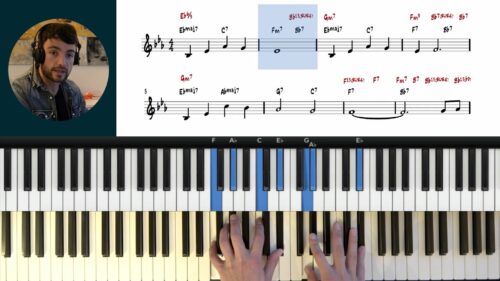
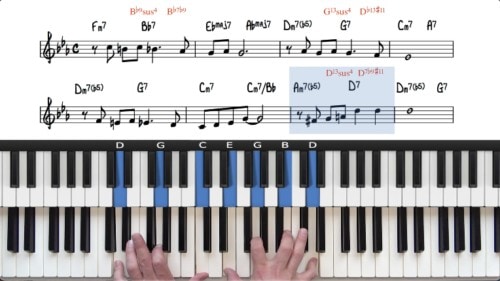
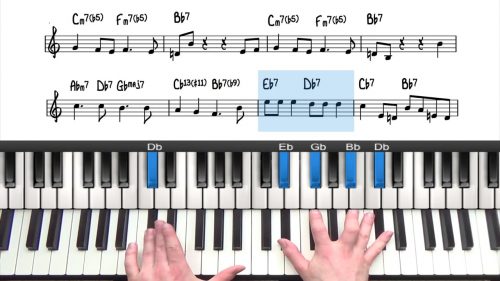


Hi Hayden,
I am really struggling with this lesson, specifically the Suspended Triad Fill. It’s hard for me to follow what’s happening exactly, with my 69 year old brain. I’m not sure what my question is. Guess I’m just reaching out for encouragement 😏. You’re a great teacher but it seems like things get complicated fast!
Well back to it.
Melissa
Hi Mellisa,
The suspended trial fill when we play a major triad in our right hand which is a 4th above the root of the chord in our left hand. Here is the process:
1) If the chord is F7 our left hand plays a shell voicing (typically root and 7 of the chord) which is the notes F and Eb.
2) Our right hand plays a triad a 4th up from the root. A 4th up from F (the root of the chord) is Bb, so we play a Bb major triad in our right hand.
3) We then put the right hand triad in it’s 2nd inversion (this means we take the top note of the Bb triad and put it on octave lower so now we have the notes F-Bb-D in our right hand)
4) From there, the top 2 notes of the Bb triad (Bb and D) move down to play A and C which is the 3rd and 5th of F Major, and the note F on the bottom stays the same. This movement creates tension, and then release when we resolve into the F triad (the triad of the chord we are playing in our left hand)
Repeat this for all 3 chords (F7, Bb7, C7) and then you can play the 12 bar blues from start to finish.
Effectively our right hand is only playing a Bb major triad and an F major triad, so if you know your major triads and their inversions you should have no problem visualising the pattern. If you are still learning triads and their inversions, this exercise will give you a practical application of how they are used in real music.
—–
To repeat the analysis for Bb7 for you….
The left hand plays a Bb7 shell (root and 7th)
If the chord is Bb7, a 4th up from the root is Eb, so we play an Eb major triad in our right hand and then put the top note of the triad on the bottom to get an Eb triad in its 2nd inversion.
From there, the top 2 notes of the Eb triad (Eb and G) move down to play D and F which is the 3rd and 5th of Bb Major, and the note Bb on the bottom stays the same.
—–
It can take time to clearly visualise this pattern. If you have never played it before I’d say a week or so of following the drills each day, and you will begin to visualise the pattern on the piano.
When learning jazz and blues the progress doesn’t happen instantly. We study and try to visualise the chord shapes and relationships, and then come back to it the next day, and the next day. Perhaps just 15 minutes per day on this.
I’m confident that If you do this each day for 1 week, after the week has passed you will be able to visualise the movement for all 3 chords.
Don’t give up and stick to a daily slot for working on this.
——
I hope that helps Mellisa and please let me know if you have any follow up questions.
Best,
Hayden
Thank you! Just saw your reply and appreciate the encouragement!!
My pleasure Melissa.
I am teaching this course to try to push students to learn quite sophisticated harmonic movements.
I understand that it can seem difficult to start with. By following the drills on a daily basis I
guarantee you will see improvements and you will be able to visualise the movements much easier.
Sticking to a consistent daily practice routine is key. It doesn’t have to be hours each day, but at least 15 minutes on a specific drill.
If you have any further questions don’t hesitate to get in touch.
Cheers,
Hayden